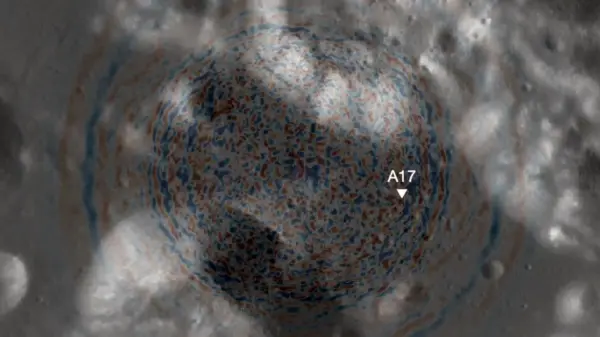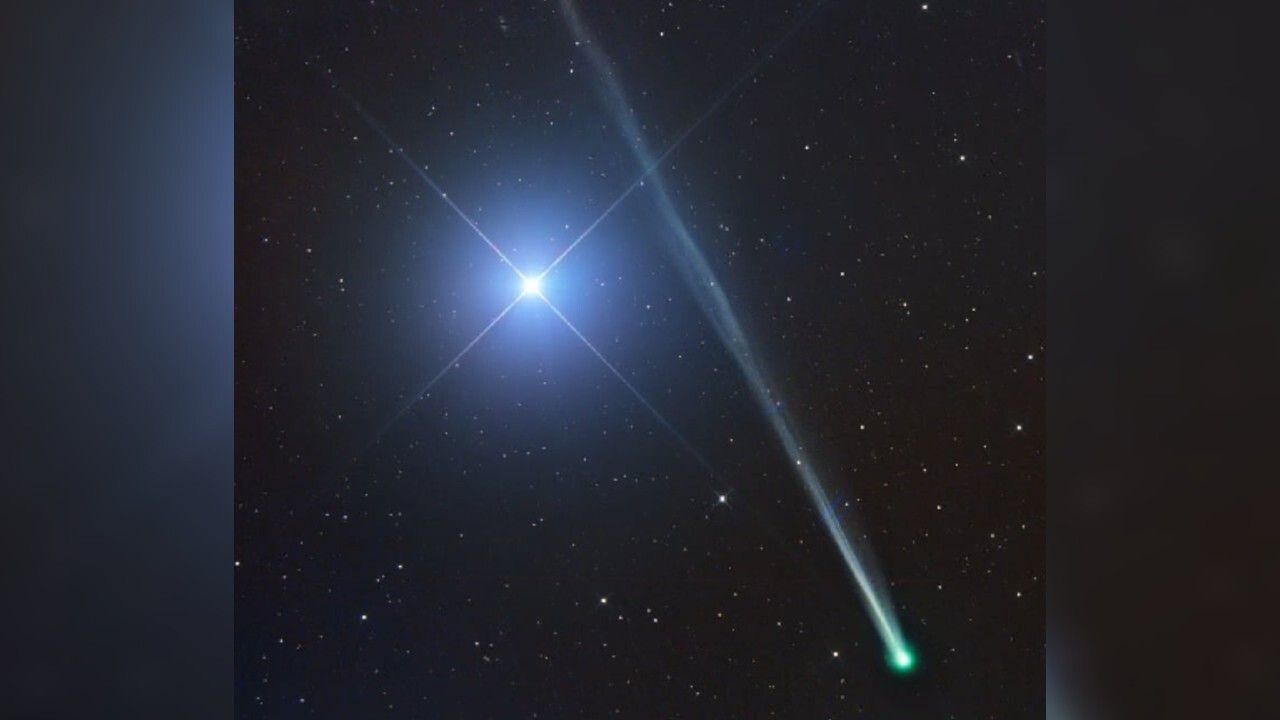A newly discovered comet, designated C/2025 R2 (SWAN), is expected to become visible in the evening sky this October. The comet was first spotted on September 10, 2023, by Vladimir Bezugly in Dnipro, Ukraine, while he was analyzing images from the Solar Wind Anisotropies (SWAN) camera aboard the Solar and Heliospheric Observer (SOHO) spacecraft. His discovery marked the 20th official comet identified using SWAN imagery, which has since garnered significant attention from amateur astronomers.
Astronomers determine a comet’s brightness using a scale known as magnitude. Lower numbers indicate brighter objects, while higher numbers suggest dimmer ones. The brightest stars have a magnitude of 0 to +1, while a magnitude of +6.5 is generally the limit for naked-eye visibility under optimal conditions. Currently, Comet SWAN has been observed at a magnitude of +7, placing it just outside the range for unaided viewing, although it is easily visible with binoculars.
As of September 15, 2023, the comet was confirmed and received its formal designation from the International Astronomical Union (IAU). It is now moving away from the sun after passing its closest point, or perihelion, on September 12 at a distance of approximately 46.74 million miles (75.20 million kilometers).
Viewing Opportunities in October
The comet is projected to make its closest approach to Earth, or perigee, on October 21, 2023, when it will be about 25.10 million miles (40.38 million kilometers) from our planet. Predictions from renowned astronomers, such as Seiichi Yoshida and Gideon Van Buitenen, suggest that Comet SWAN could reach a brightness between magnitude +6 and +7 during the third week of October, which could allow for potential visibility to the naked eye.
Daniel W.E. Green from the Central Bureau for Astronomical Telegrams forecasts that the comet will hover around magnitude +6 from October 2 to 20. There is a possibility it may become faintly visible without optical aids for a few days around October 12.
Currently, Comet SWAN has primarily been visible in the Southern Hemisphere, where it has been easier to observe. However, its trajectory will shift northward by the end of September, allowing observers in the Northern Hemisphere to catch a glimpse. By early October, the comet will ascend higher in the southwestern sky, reaching an altitude of approximately 12 degrees above the horizon by the end of evening twilight. By October 28, its altitude is expected to rise to 30 degrees (“three fists”) above the south-southwest horizon.
During its journey through October, Comet SWAN will traverse several constellations, including Libra, Scorpius, and Sagittarius. Observers should keep in mind that viewing conditions may be hampered by light pollution, making it necessary to seek dark skies for optimal sightings.
Characteristics and Misconceptions
Comet SWAN is primarily composed of gas rather than dust, which means it may appear fainter than other comets that contain more reflective dust particles. Its faint bluish-white glow is generated by gases activated by ultraviolet rays from the sun, similar to how black light illuminates phosphorescent materials. Observers will likely describe it as a small, circular cloud with a condensed center and a faint tail extending approximately 2 degrees.
Social media has sparked interest in the potential for Comet SWAN to produce a meteor shower between October 4 and 6. This speculation arose from diagrams suggesting that the comet’s orbit intersects with Earth’s. However, astronomer Joe Rao clarifies that the comet’s orbit lies approximately 4.4 million miles (7 million kilometers) above Earth’s orbital plane, making any meteor shower unlikely.
In conclusion, as Comet C/2025 R2 (SWAN) approaches its closest point to Earth, astronomers and enthusiasts alike are gearing up for what could be a spectacular celestial display. As its brightness fluctuates, observers should prepare to use binoculars or small telescopes to enhance their viewing experience, especially in regions with minimal light interference.





































































